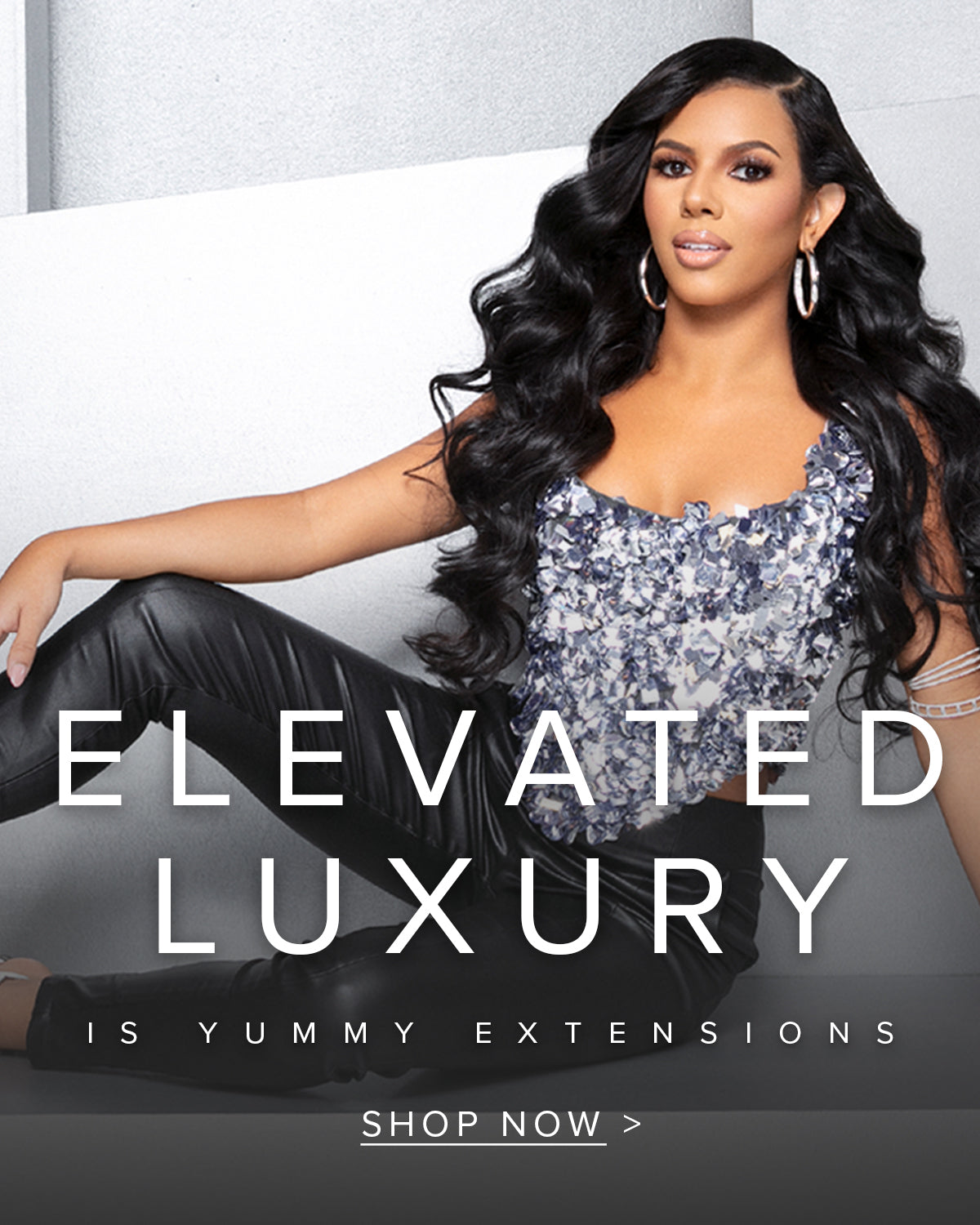The Best - and Easiest - Oils for Curly Hair
You know it, and we know it: natural, curly hair is the most difficult to care for. It needs moisture - but just the right kind, needs to be tamed - but gently, and requires that everything be recalibrated when the humidity changes. Every kind of curl is different, and requires a different approach to styling, washing, and care. Curls mean work.
But the work is worth it, isn’t it? Nothing projects confidence and individuality like a head full of gorgeous curls, bouncing with every shimmy, shake, and laugh. We receive countless comments and questions about how best to care for curly hair. Yummy is constantly researching new techniques to help you achieve the looks you love. One thing we’ve learned - advice for hair care changes often based on new research and the development of new products - especially for curly hair.
Oil treatments for curls certainly aren’t new - your grandmothers and great grandmothers probably used various oils to care for and style their hair. But recently, there’s been an explosion of research into the benefits and ideal uses for particular oils. In short: when it comes to curls, not all oils are created equally.
Below, we’re sharing the most up-to-date tricks for using oils to care for your hair.
What’s your goal?
Hair oils fall into two broad categories based on what they accomplish: moisturizing and sealing. To maximize their effectiveness, you need to know what your oils do best.
Oils that moisturize (like coconut, olive, or castor oils) function like a standalone conditioner - they can penetrate the hair’s cuticle and absorb easily into the hair shaft. They are heavier than sealing oils, so are best used for deep conditioning treatments or scalp massages, and should be washed out before hair styling.
Oils that seal (like jojoba oil) form a protective layer around the hair shaft. They are significantly lighter than moisturizing oils, but, as the name suggests, don’t actually provide much moisture of their own. Rather, they can be applied to wet hair to lock in water, or on top of a moisturizing oil to provide an extra long-lasting treatment.
Understanding the differences between your oils can also help you combine them in the right order. Applying a sealing oil before a moisturizer will render the moisturizer ineffective. Switching the order, though, deepens conditioning treatment.
Pick your oil
Curly-headed beauties have waited a long time for their hair to be given its proper due by stylists, cosmetologists, and scientists. But no more! New oil-based treatments abound, with news of rare and exotic oils arriving in our feeds frequently. Here, we’ll start with the four most common kinds of oil - any of which can be found in your supermarket or drugstore. Stay tuned for later posts about new and unusual oils.
Jojoba Oil
This light oil is a classic, and should be a staple in every curly-haired woman’s toolkit. Jojoba most closely resembles the hair’s naturally produced oil, called sebum, and is best used to reproduce the hair’s natural shine and cut down on frizz. Jojoba is also one of the best sealers available, and it works best applied over wet hair, or hair pre-treated with a moisturizing oil.
Coconut Oil
Coconut oil may be our favorite all-around moisturizing oil. Why? The molecules in this oil are small enough to penetrate the hair shaft, so it’s extra effective at deep moisturization. But it doesn’t just work on the hair itself - curly hair experts love to massage coconut oil into the scalp to reduce dandruff and itchiness. An added bonus? It smells amazing! One thing to look out for, though, is that this oil remains solid at room temperature. If it’s cold in your bathroom, heat up the container under a stream of hot water, and make sure you have plenty of hot water on hand to rinse it out.
Castor Oil
Castor oil can sound a little intimidating but this thick oil packs a punch, which is why it’s a very common ingredient in most home beauty treatments in Jamaica and throughout the Caribbean. Not only is it a fantastic moisturizer - the thick consistency clings to hair ensuring all around coverage - it’s been scientifically proven to improve circulation around the hair follicle, which supports healthy hair growth. To use it this way, massage the oil into the scalp and comb through wet hair. To gently heat the hair, put on a shower cap, and leave it on for one to two hours to ensure the deepest penetration. This oil can be a little messy, so make sure to wear an old shirt before working with it.
Olive Oil
Another classic moisturizing oil, olive oil is guaranteed to always be on hand. Try using it to detangle your curls before moisturizing, or even adding it to other conditioning treatments. Worried you might smell a little like a pasta restaurant? Opt for light-colored versions, usually not labeled extra-virgin.
If you’re new to using oils, these four are some of the best, the most affordable, and easy to find oils out there. Want to try more? Yummy has you covered, as always. Check back in with us soon to learn about new and exotic oils just hitting the market. Stay tuned!




